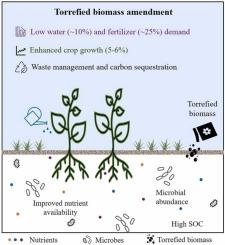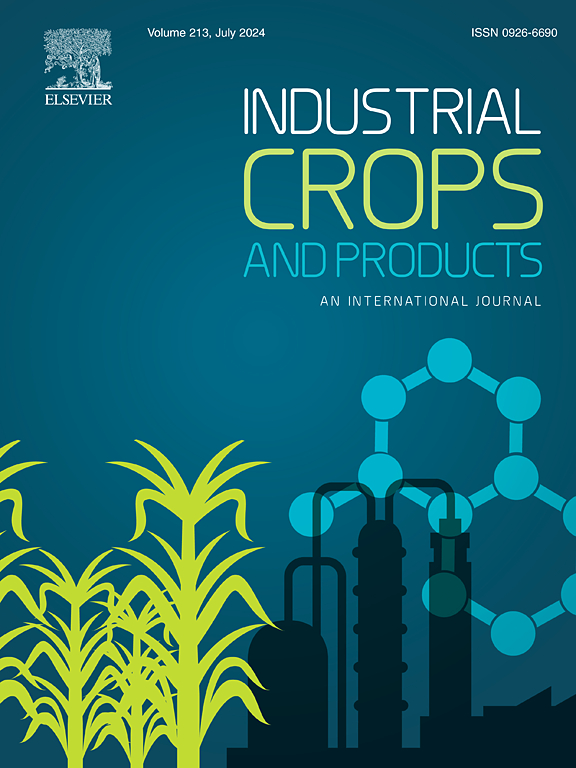Rice straw valorization through torrefaction to improve soil health and crop growth
IF 5.6
1区 农林科学
Q1 AGRICULTURAL ENGINEERING
引用次数: 0
Abstract
The mismanagement of agricultural biomass, such as crop residue, adversely affects soil fertility by depleting essential nutrients and microbes, while also emitting carbon dioxide, nitrous oxides, methane, and particulate matter in the environment. This study aims at the valorization of rice straw through the thermochemical process of torrefaction and investigates its potential as a soil amendment. Torrefied biomass is produced by oxidative torrefaction of rice straw at 300°C in an auger-based moving bed reactor. Torrefied rice straw, both alone and in combination with nutrients, is applied in soil with rice seedlings at application rates of 1 %, 3 %, and 5 % in the pots, followed by the optimal combination in the field trials. Torrefied biomass improves soil water holding capacity, pH, cation exchange capacity, organic carbon, and nutrient concentration, with a more pronounced impact observed at higher application rates. Torrefied biomass, at a rate of 1 %, increases soil water holding capacity and organic carbon levels by 8 % and 27.3 %, respectively, at the start of the season in the field. In the field trials, a combination of 1 % torrefied straw with 75 % nutrient increases plant height by 20.7 % and grain yield by 49.6 %. These results are comparable to the conventional 100 % nutrient treatment in soil without any torrefied biomass. Torrefied rice straw also improved the soil microbial population and mobility. The heavily torrefied rice straw has the potential to enhance soil health and promote crop growth while simultaneously diminishing the requirement for external fertilisers and water for irrigation.

求助全文
约1分钟内获得全文
求助全文
来源期刊

Industrial Crops and Products
农林科学-农业工程
CiteScore
9.50
自引率
8.50%
发文量
1518
审稿时长
43 days
期刊介绍:
Industrial Crops and Products is an International Journal publishing academic and industrial research on industrial (defined as non-food/non-feed) crops and products. Papers concern both crop-oriented and bio-based materials from crops-oriented research, and should be of interest to an international audience, hypothesis driven, and where comparisons are made statistics performed.
 求助内容:
求助内容: 应助结果提醒方式:
应助结果提醒方式:


